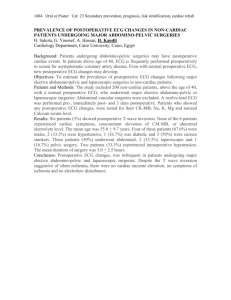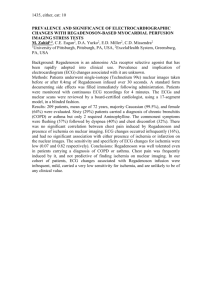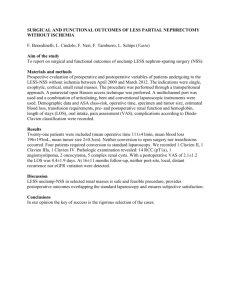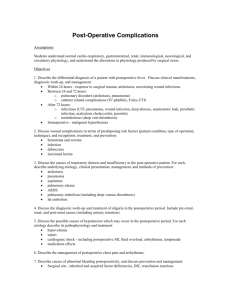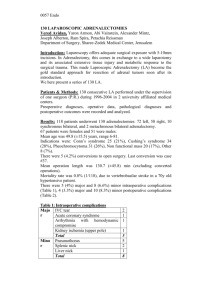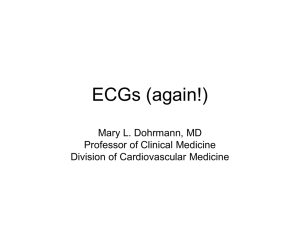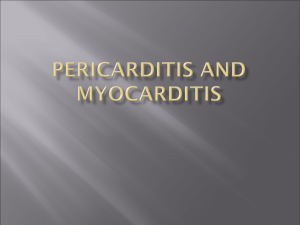duration of surgery and postoperative ecg in
advertisement
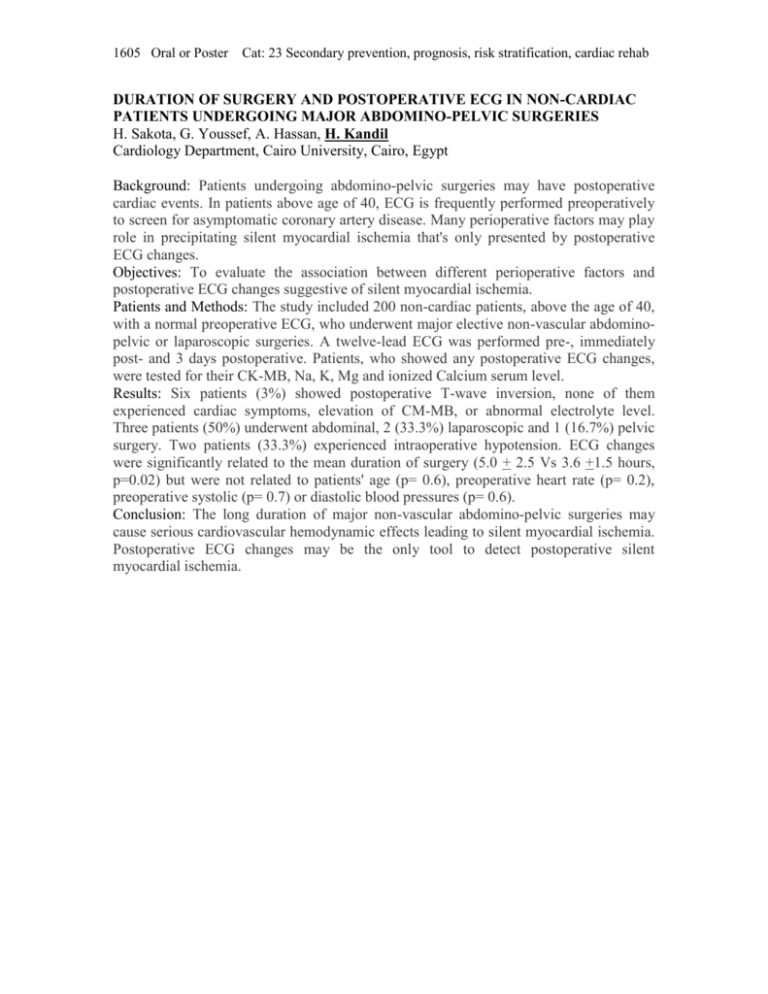
1605 Oral or Poster Cat: 23 Secondary prevention, prognosis, risk stratification, cardiac rehab DURATION OF SURGERY AND POSTOPERATIVE ECG IN NON-CARDIAC PATIENTS UNDERGOING MAJOR ABDOMINO-PELVIC SURGERIES H. Sakota, G. Youssef, A. Hassan, H. Kandil Cardiology Department, Cairo University, Cairo, Egypt Background: Patients undergoing abdomino-pelvic surgeries may have postoperative cardiac events. In patients above age of 40, ECG is frequently performed preoperatively to screen for asymptomatic coronary artery disease. Many perioperative factors may play role in precipitating silent myocardial ischemia that's only presented by postoperative ECG changes. Objectives: To evaluate the association between different perioperative factors and postoperative ECG changes suggestive of silent myocardial ischemia. Patients and Methods: The study included 200 non-cardiac patients, above the age of 40, with a normal preoperative ECG, who underwent major elective non-vascular abdominopelvic or laparoscopic surgeries. A twelve-lead ECG was performed pre-, immediately post- and 3 days postoperative. Patients, who showed any postoperative ECG changes, were tested for their CK-MB, Na, K, Mg and ionized Calcium serum level. Results: Six patients (3%) showed postoperative T-wave inversion, none of them experienced cardiac symptoms, elevation of CM-MB, or abnormal electrolyte level. Three patients (50%) underwent abdominal, 2 (33.3%) laparoscopic and 1 (16.7%) pelvic surgery. Two patients (33.3%) experienced intraoperative hypotension. ECG changes were significantly related to the mean duration of surgery (5.0 + 2.5 Vs 3.6 +1.5 hours, p=0.02) but were not related to patients' age (p= 0.6), preoperative heart rate (p= 0.2), preoperative systolic (p= 0.7) or diastolic blood pressures (p= 0.6). Conclusion: The long duration of major non-vascular abdomino-pelvic surgeries may cause serious cardiovascular hemodynamic effects leading to silent myocardial ischemia. Postoperative ECG changes may be the only tool to detect postoperative silent myocardial ischemia.
